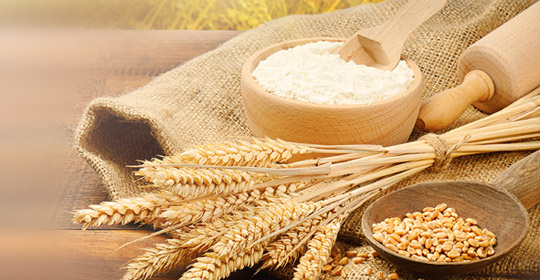Fibre in food : what does it mean?
Dietary fibre is a residue of vegetable food that is not processed by digestion. Since they do not break down, they help to form stools and reduce the risk of constipation. They promote intestinal transit, while helping to lower blood cholesterol levels and regulate blood sugar levels. However, many of us do not eat enough! Let's see how we can better integrate them into our diet and why they are beneficial to our digestive health.

What are the different types of dietary fibre?
Dietary fibre is the part of plant foods that is not digested by the body. Since it remains intact, it helps to form stool and reduces the risk of constipation.
There are two types of dietary fibre: soluble and insoluble. As the name suggests, soluble fibre (pectin, mucilage…) dissolves in water. It then forms a gummy, gel-like material that helps residues pass through the digestive tract. Soluble fibre offers many health benefits, such as:
- Minimizing digestive discomfort
- Reducing the absorption of fat and bad cholesterol
- Preventing heart disease
- Balancing intestinal flora
- Reducing the absorption of carbohydrates
Insoluble fibre (lignin, cellulose…) does not dissolve in water. As a result, it increases stool bulk and accelerates the passage of materials through the digestive system. It contributes to health in several ways by:
- Controlling appetite and weight
- Preventing constipation
- Preventing certain types of digestive or colorectal cancers
The benefits of dietary fibre
They are credited with several benefits:
- Appetite and weight control
- Prevention of constipation
- Prevention of certain digestive or colorectal cancers
What are high-fibre foods?
Most fibre-rich foods contain both soluble and insoluble fibre. They can be found in plant-based foods: whole grains, fruit, vegetables, nuts and beans. Each day, women should be eating 25 g of fibre and men, 38 g. Most people, however, only consume half of that daily recommended value.

Here are a few foods with high fibre content:
1 serving (125 ml or ½ cup) red beans: 12 g
1 serving (30g) of wheat bran cereal: 12 g
1 serving (125 ml or ½ cup) whole wheat pasta: 8 g
1 apple, unpeeled: 4 g
1 serving (125 ml or ½ cup) brown rice: 3 g
You can easily start getting more fibre in your diet by making small changes. Here are a few suggestions:
- Choose fibre-rich cereal.
- Eat the number of fruit and vegetable servings recommended by Canada’s Food Guide.
- Add beans to your diet.
- Eat wholegrain pasta and bread.
Another option is to incorporate powdered fibre into your meals. Fibre supplements are tasteless and colourless and completely dissolve in beverages and soft foods, without altering their taste or texture. They can be added to everything from coffee to yogurt, juice and pudding. With a little creativity, you’ll be well on your way to good digestive health!
Our tips for eating more fibre!
It is easy to eat more fibre by making small changes in your diet. In particular, it is suggested that:
- to choose high-fibre cereals;
- eat the amount of fruits and vegetables recommended by Canada's Food Guide;
- to add legumes to our menu;
- And to consume pasta and breads made of whole grains.
- It is also possible to incorporate powdered fibre into your diet.
Odourless and colourless, these fibre supplements dissolve completely in soft drinks and foods, without changing their taste or texture. They can be added to coffee, yogurt, juice, pudding, etc. In short, all you need to do is be creative to ensure that you maintain good digestive health!
Pharmacy services
For more advice on dietary fibre and digestive health, feel free to ask your family pharmacist for advice.
He will be happy to help you! Or continue your reading on digestive health:
Probiotics in action
Which antacid should i choose
How to prevent and treat heartburn
The pharmacy services presented in this section are offered by pharmacist owners who are affiliated with Uniprix. The pharmacists are solely responsible for the professional activities carried out during the practice of pharmacy. These services are offered in participating pharmacies only. Certain fees and conditions may apply.
* The information contained herein is provided for informational purposes only and is not intended to provide complete information on the subject matter or to replace the advice of a health professional. This information does not constitute medical consultation, diagnosis or opinion and should not be interpreted as such. Please consult your health care provider if you have any questions about your health, medications or treatment.
